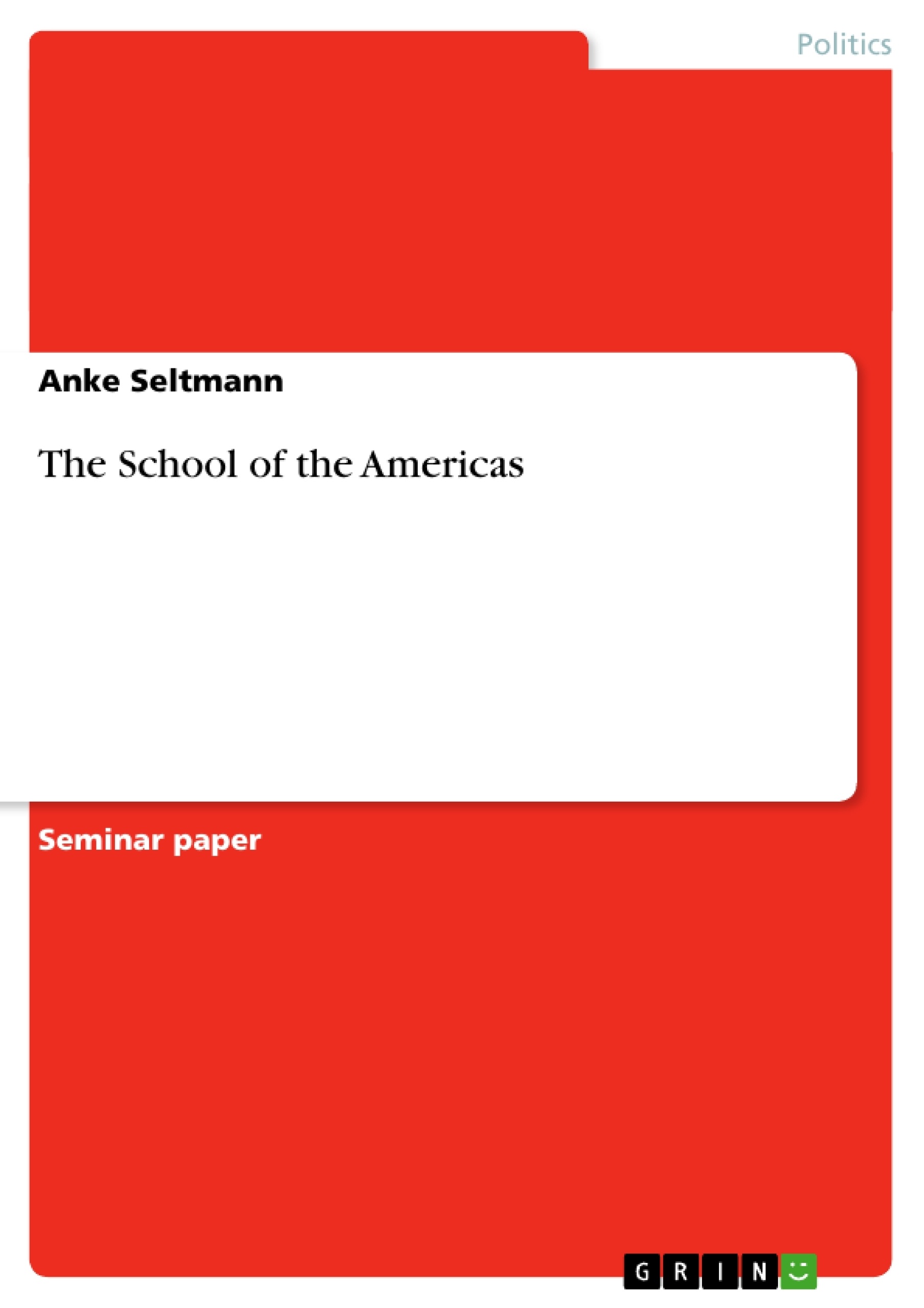1 The School of the Americas
“Chartered by the U.S. Congress, the Western Hemisphere Institute for Security Cooperation (WHINSEC – former: the School of the Americas) provides professional education and training for civilian, military and law enforcement students from nations throughout the Western Hemisphere” . The Institute's Mission according to the self-projection on the website of the WHINSEC is the following:
“Our mission comes directly from the Congressionally approved legislation that authorizes and directs WHINSEC's existence (10 U.S.C. § 2166).
The purpose of the Institute is to provide professional education and training to eligible personnel of nations of the Western Hemisphere within the context of the democratic principles set forth in the Charter of the Organization of American States (such charter being a treaty to which the United States is a party), while fostering mutual knowledge, transparency, confidence, and cooperation among the participating nations and promoting democratic values, respect for human rights, and knowledge and understanding of United States customs and traditions.”
The WHINSEC is an U.S. Army facility at Fort Benning in Columbus, Georgia. A precursor – the Latin American Ground School – was established in 1946 in the Panama Canal Zone. After some changes this U.S. Army facility, training especially Latin American military personnel, became the School of the Americas (SOA) in 1963. In 1984 it was relocated to Fort Benning in Columbus, Georgia. As Lesley Gill points out “the establishment of the Ground School coincided with renewed U.S. expansionist ambitions in the Americas and partially filled a power vacuum created by World War II, which ruptured long-standing military ties between European imperial powers – particularly France, Italy, and Germany – and Latin American.” Further she argues that, “the Ground School, however, did much more than train students in the tactics of warfare. It initiated their incorporation into the ideology of the “American way of life” by steeping them into a vision of empire that identified their aspirations with those of the United States, a process that, […] continues today.”
Table of Contents
- The School of the Americas
- Latin America
- Nicaragua
- Honduras
- El Salvador
Objectives and Key Themes
This text examines the history and impact of the School of the Americas (SOA), a U.S. military training facility established in 1946 to train Latin American military personnel. The text aims to shed light on the controversy surrounding the SOA and its graduates' involvement in human rights abuses in Latin America during the Cold War.
- The history and evolution of the SOA, from its origins to its renaming as the Western Hemisphere Institute for Security Cooperation (WHINSEC).
- The role of the SOA in training Latin American military personnel and its impact on human rights in the region.
- The U.S. government's foreign policy in Latin America and its relationship with the SOA.
- The controversy surrounding the SOA and its graduates' involvement in human rights abuses.
- The effectiveness of the SOA's human rights training program in mitigating the risk of human rights violations.
Chapter Summaries
The first chapter details the history of the SOA, from its establishment in 1946 to its renaming as WHINSEC in 2001. The chapter highlights the SOA's role in training Latin American military personnel and its connection to U.S. foreign policy in the region. The author argues that the SOA played a significant role in fostering instability and human rights abuses in Latin America.
The second chapter focuses on the role of the SOA in the context of counterinsurgency warfare and its impact on Latin American countries. The chapter examines the U.S. government's support for military dictatorships and its involvement in training security forces responsible for human rights violations. Examples of atrocities committed in Nicaragua, Honduras, and El Salvador are provided to illustrate the SOA's impact.
Keywords
The text focuses on the School of the Americas (SOA), human rights abuses, U.S. foreign policy, Latin America, counterinsurgency warfare, military training, and the Cold War. It delves into the historical context of the SOA, its impact on human rights in the region, and the controversy surrounding its practices. Key concepts include the role of the SOA in training Latin American military personnel, the U.S. government's involvement in supporting dictatorships, and the consequences of these actions for human rights in Latin America.
- Quote paper
- Anke Seltmann (Author), 2006, The School of the Americas , Munich, GRIN Verlag, https://www.grin.com/document/131325




